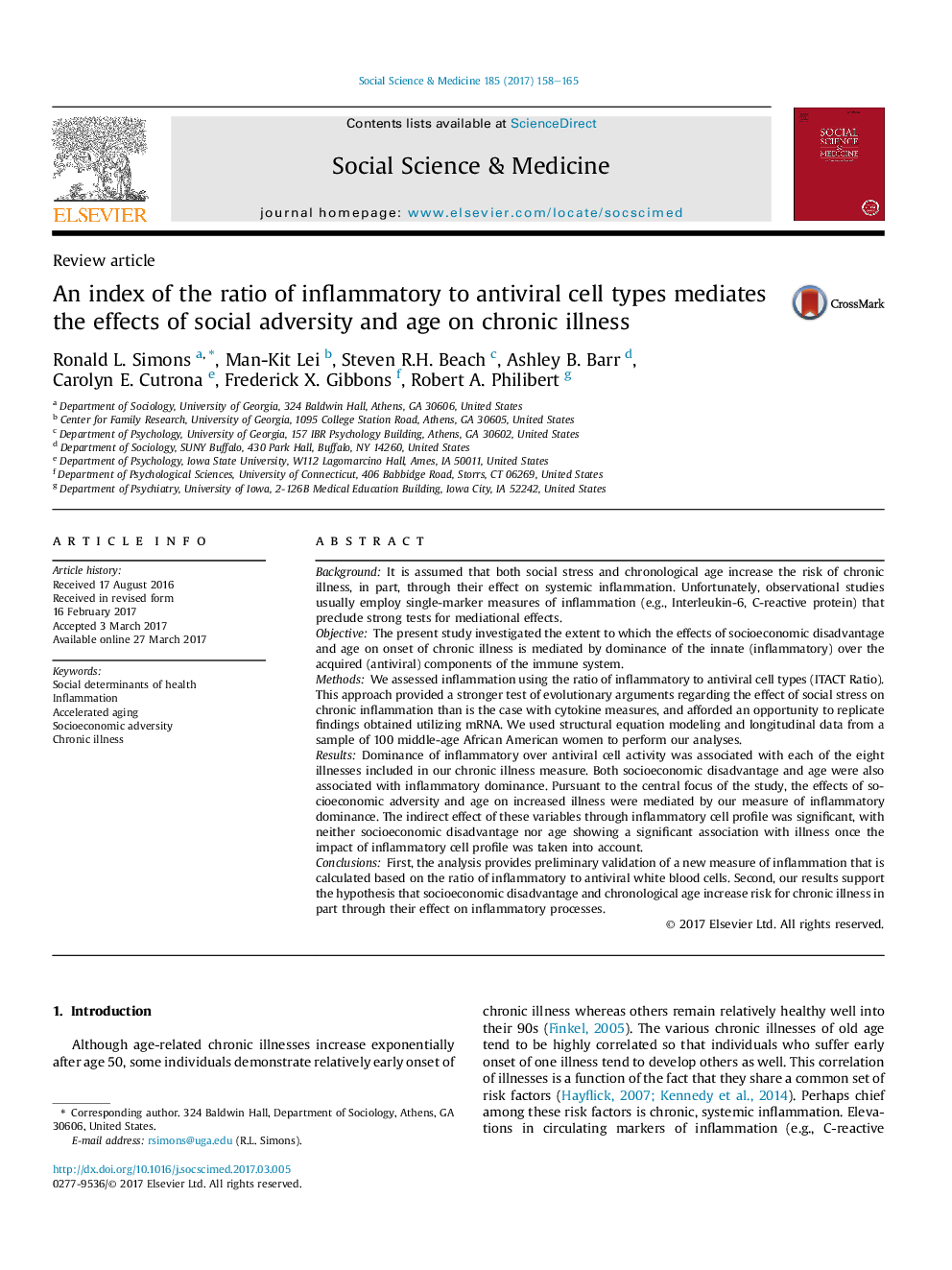| Article ID | Journal | Published Year | Pages | File Type |
|---|---|---|---|---|
| 5046414 | Social Science & Medicine | 2017 | 8 Pages |
â¢Inflammation is assumed to mediate the effect of adversity on chronic illness.â¢We calculated an index of inflammation based on the distribution of immune cell types.â¢This index mediated the effect of both social adversity and age on chronic illness.
BackgroundIt is assumed that both social stress and chronological age increase the risk of chronic illness, in part, through their effect on systemic inflammation. Unfortunately, observational studies usually employ single-marker measures of inflammation (e.g., Interleukin-6, C-reactive protein) that preclude strong tests for mediational effects.ObjectiveThe present study investigated the extent to which the effects of socioeconomic disadvantage and age on onset of chronic illness is mediated by dominance of the innate (inflammatory) over the acquired (antiviral) components of the immune system.MethodsWe assessed inflammation using the ratio of inflammatory to antiviral cell types (ITACT Ratio). This approach provided a stronger test of evolutionary arguments regarding the effect of social stress on chronic inflammation than is the case with cytokine measures, and afforded an opportunity to replicate findings obtained utilizing mRNA. We used structural equation modeling and longitudinal data from a sample of 100 middle-age African American women to perform our analyses.ResultsDominance of inflammatory over antiviral cell activity was associated with each of the eight illnesses included in our chronic illness measure. Both socioeconomic disadvantage and age were also associated with inflammatory dominance. Pursuant to the central focus of the study, the effects of socioeconomic adversity and age on increased illness were mediated by our measure of inflammatory dominance. The indirect effect of these variables through inflammatory cell profile was significant, with neither socioeconomic disadvantage nor age showing a significant association with illness once the impact of inflammatory cell profile was taken into account.ConclusionsFirst, the analysis provides preliminary validation of a new measure of inflammation that is calculated based on the ratio of inflammatory to antiviral white blood cells. Second, our results support the hypothesis that socioeconomic disadvantage and chronological age increase risk for chronic illness in part through their effect on inflammatory processes.
